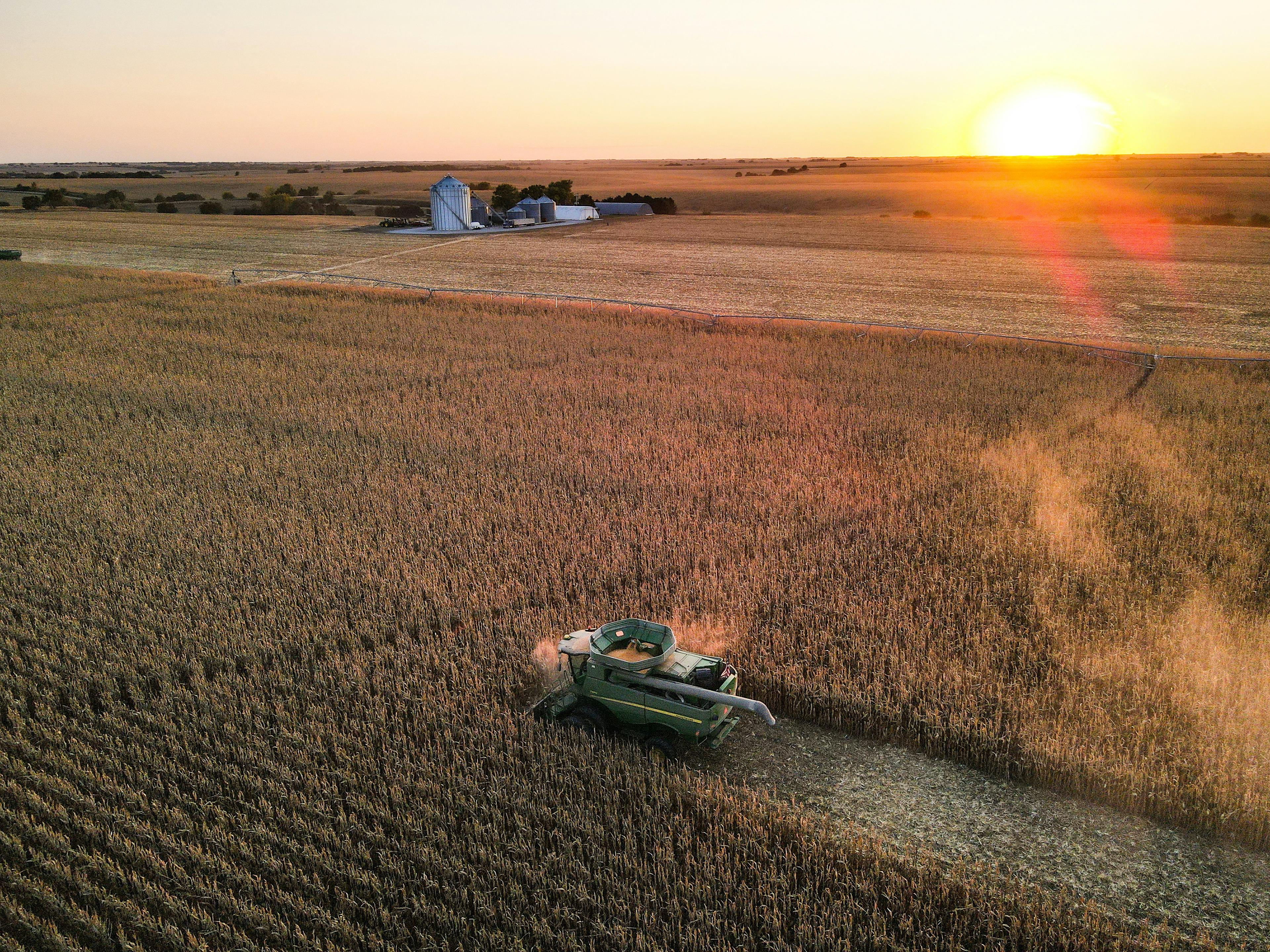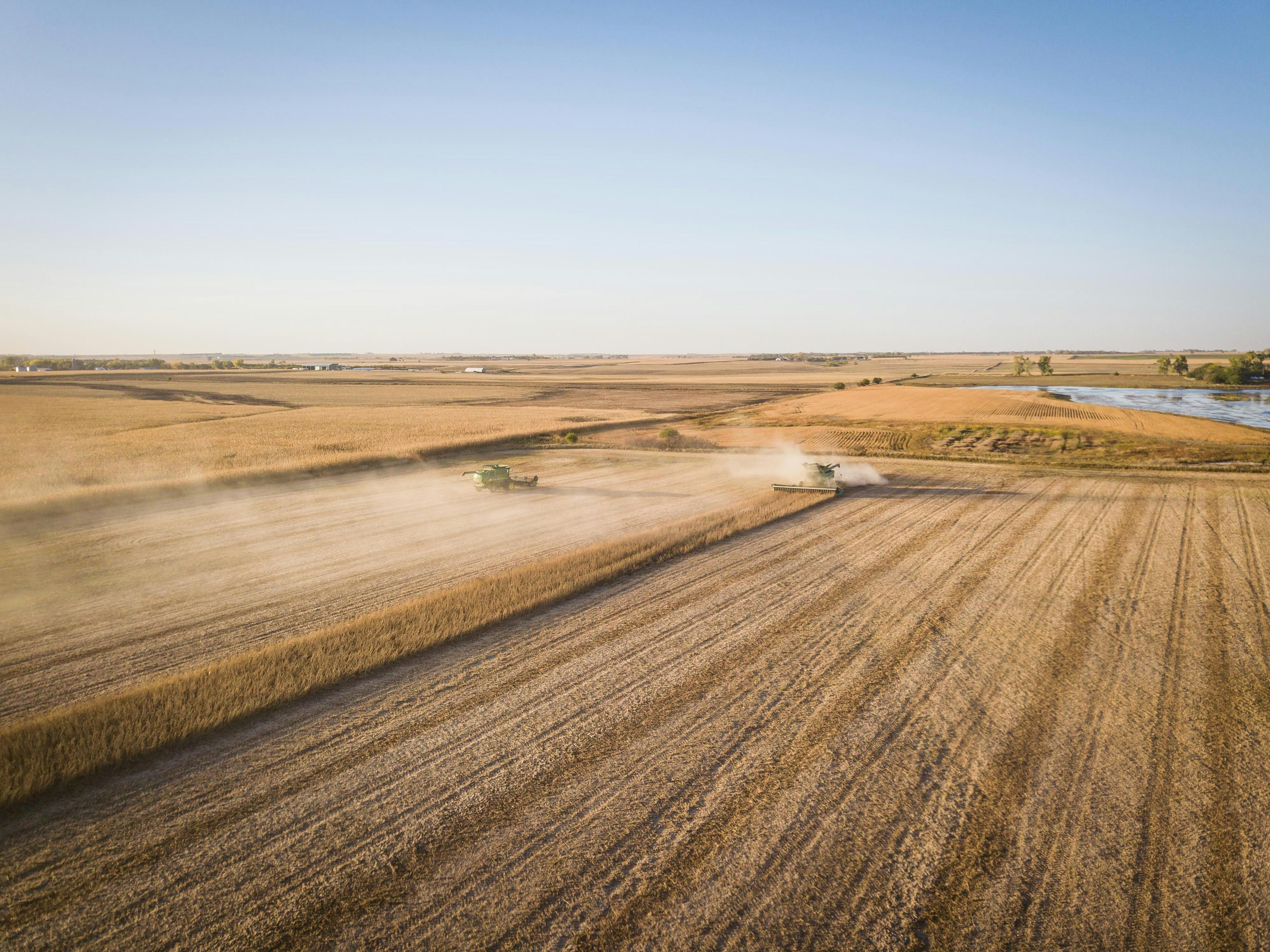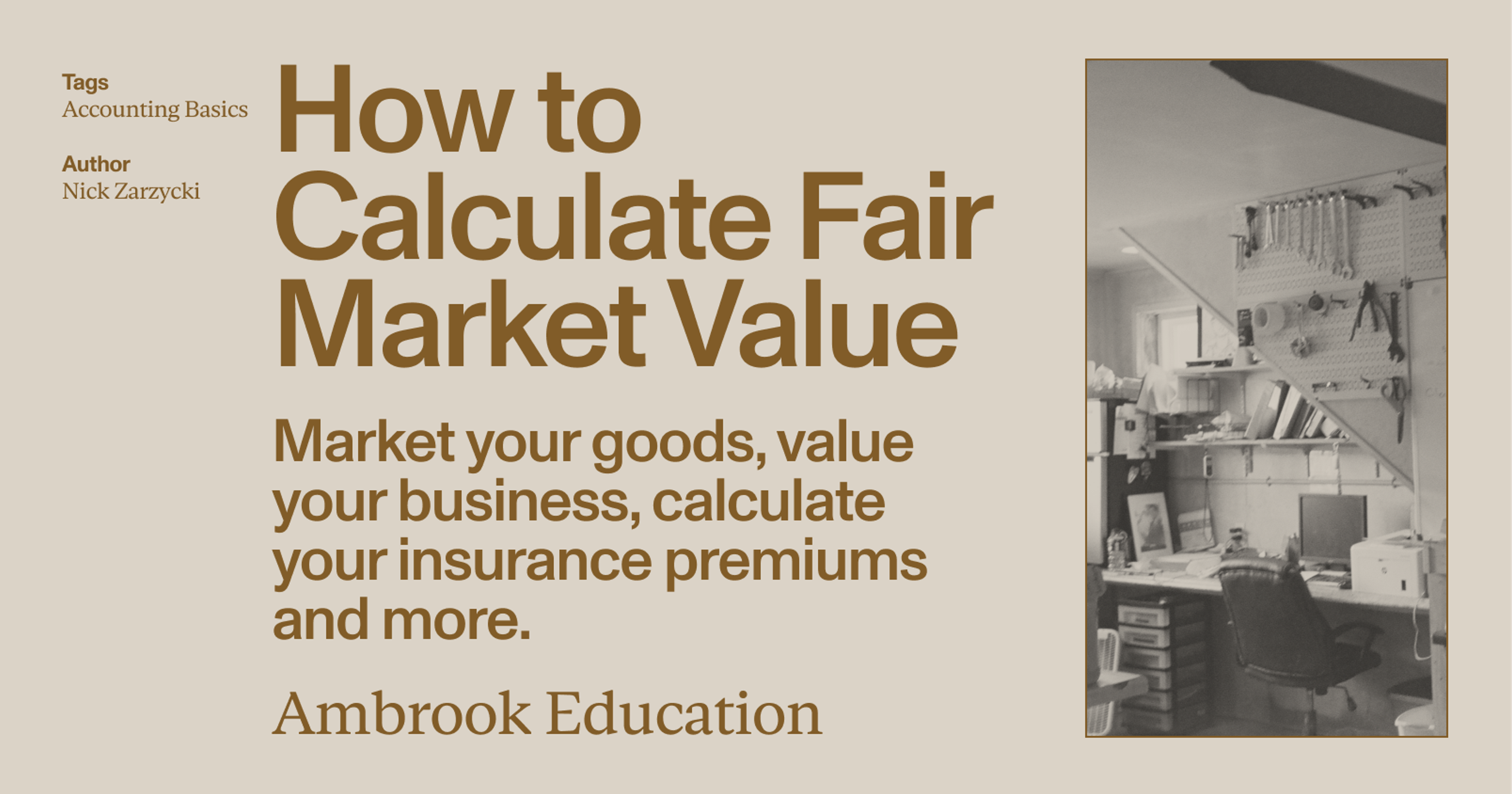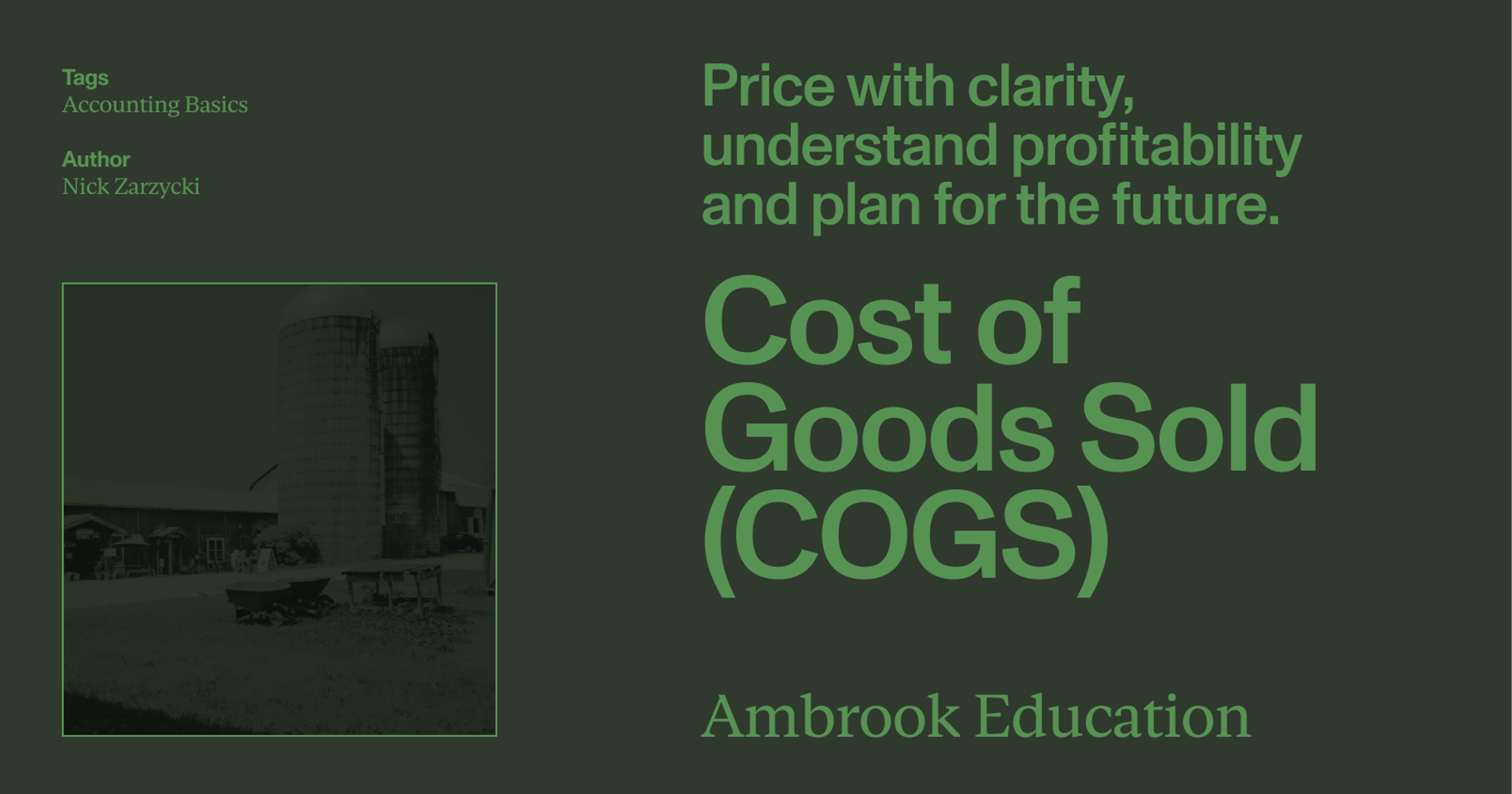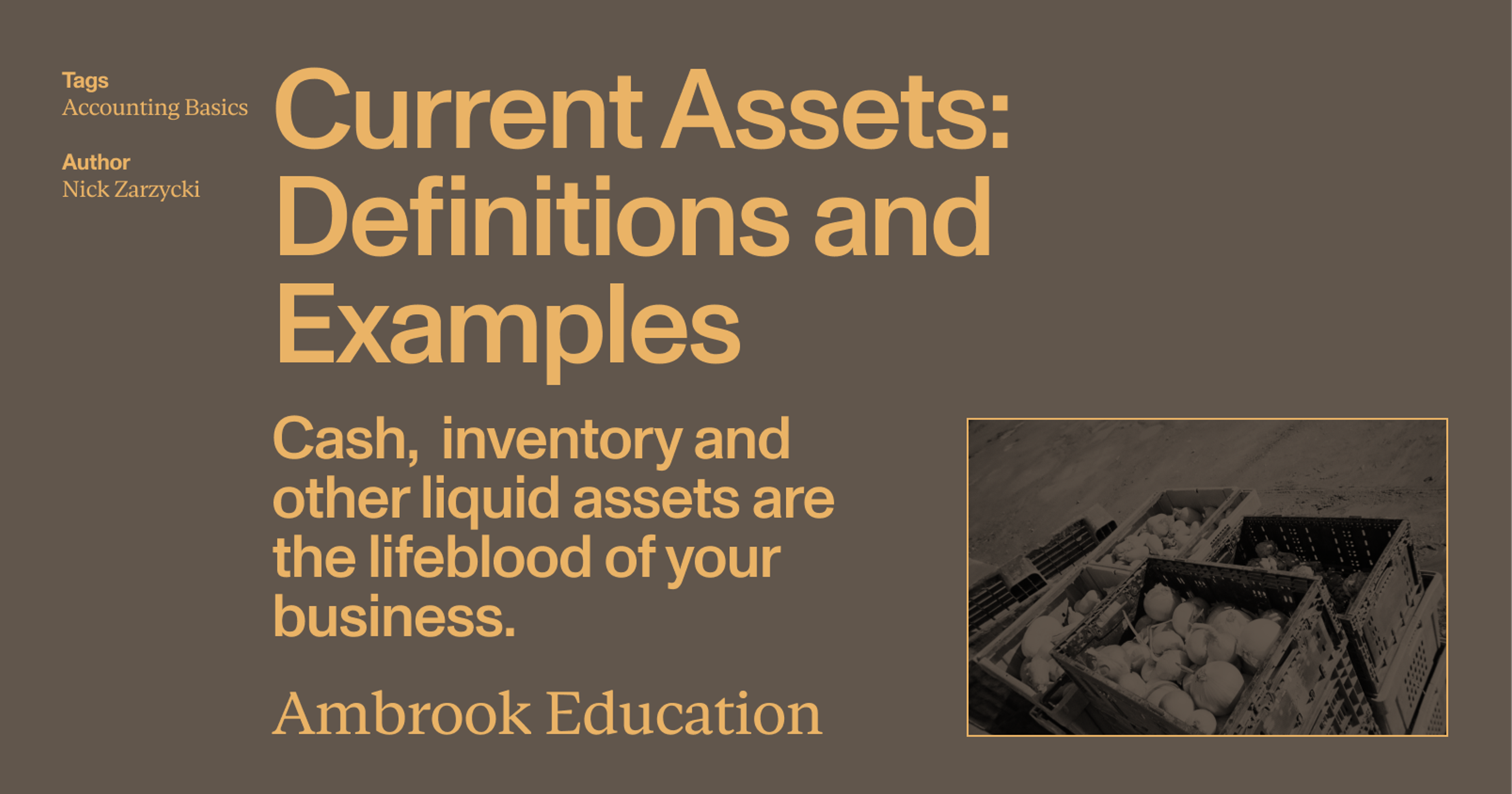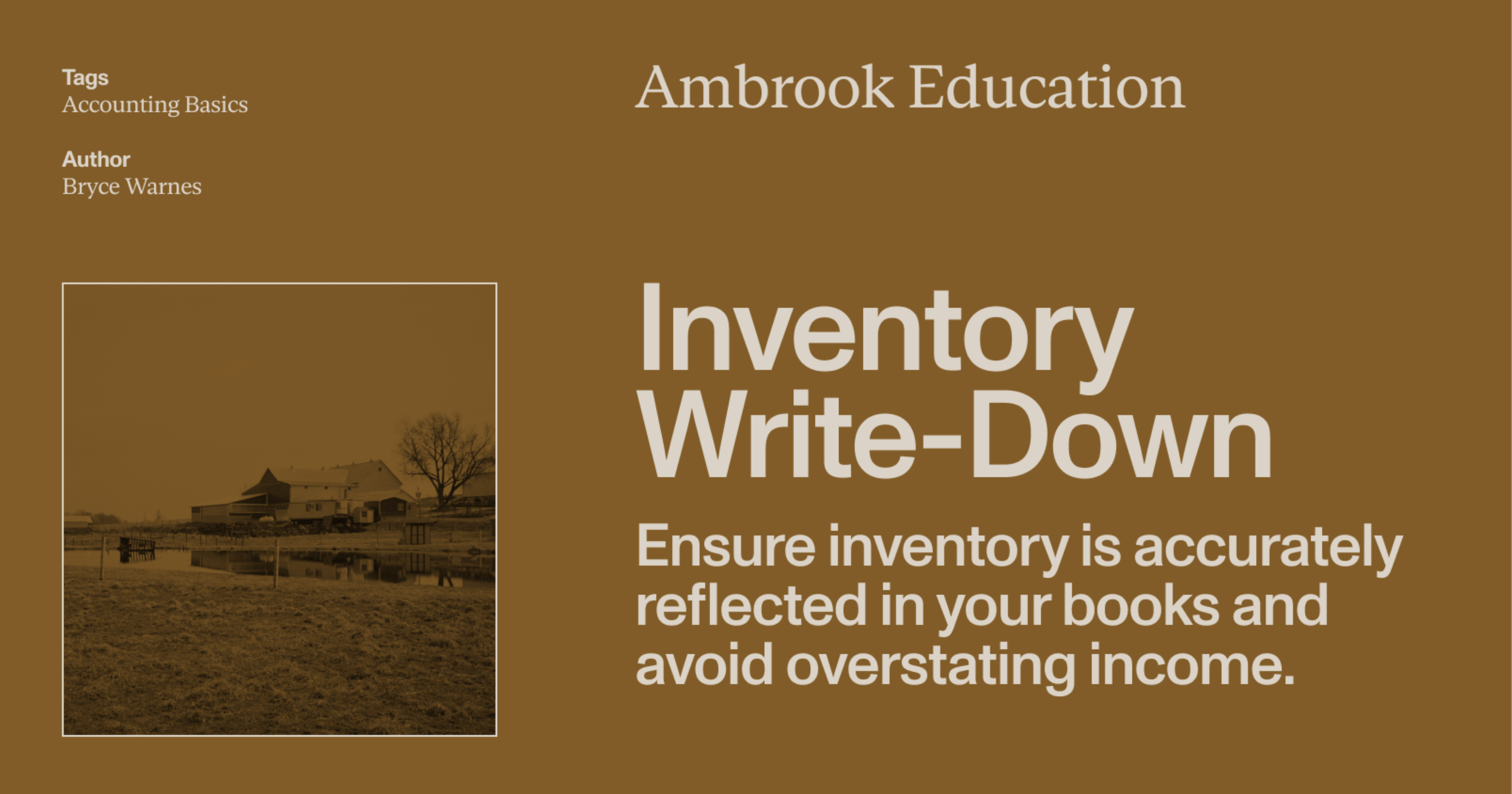Accounting for your farm inventories properly can help you secure funding, streamline your expenses and more accurately measure profitability.
Staying on top of crucial farm inventories like feed, fertilizer and fuel is important for any business, helping plan purchases, identify waste and project cash flow.
But taking the time to account for your inventories properly can also open new opportunities, helping more accurately measure the cost of production and true economic profit. Doing so is also the first step towards compiling an accurate balance sheet, which can make it easier to secure funding, purchase insurance and evaluate opportunities for growth.
What is farm inventory accounting?
Most agricultural producers use one of two systems for their inventory accounting: cash and accrual basis.
Under cash basis accounting, new inventories–like a new shipment of fertilizer or corn silage–are deducted as soon as they’re purchased.
While this results in more tax savings up front and is convenient from a recordkeeping perspective, cash basis inventory accounting could also potentially distort the profitability of the business. Income and expense records are important, but they don’t fully capture increases or decreases in the actual value of livestock, grain, feed and supplies held by an agricultural operation.
That’s where accrual accounting comes in: under that system, expenses are incurred when product is sold or moved onto the next step in production. This ‘matches’ inventory costs to revenue more closely than under cash basis accounting, allowing you to create accurate accrual financial statements that provide a complete picture of your business’ health.
With accurate accrual-basis financial statements, it becomes a whole lot easier to borrow money, take on external investors and plan for the future. (Also, some ag operations with average annual gross receipts over $31 million must use accrual.)
It’s important to note that you don’t have to give up your cash basis system to reap the benefits of accrual accounting. With a proper system like Ambrook, you can record inventory purchases on an accrual basis while maintaining the integrity of your cash basis P&L statement.
Track your costs and know your numbers with Ambrook.
How does farm inventory accounting work?
There are two ways to produce accrual-basis financial statements for your agricultural operation:
You can start with your cash basis Schedule F income statement and make certain adjustments to account for changes in inventory to come up with an accrual statement. (Iowa State University Extension Specialist William Edwards has a handy guide that explains how to do this step-by-step.)
You can track your numbers on an accrual basis, preferably using a farm accounting system like Ambrook, which lets you keep your cash basis numbers.
In both cases you’ll need to complete a physical count of your ending farm inventories, which is what we’ll focus on first.
What’s included in farm inventories?
The first step to inventory accounting is to actually identify, count and/or weigh your farm’s inventories, which include any goods that you purchased, raised or harvested with the intent to use in the business’ production process. This might include:
Feed and all feed-related ingredients and mixed rations, including quantities on hand, type, quality, storage location, and current market value.
Seed, seedlings and planting stocks for crops, pasture, and cover crops, and includes seed type, variety, quantity, germination rate (if known), and storage conditions.
Fuel used in business vehicles, machinery, and heating systems, including fuel types, quantities, storage location (such as tanks), and current market value.
Fertilizer applied to fields, pastures, or forage crops, including organic and synthetic fertilizers, including formulation, quantity, and location.
Chemicals like herbicides, pesticides, fungicides, and other crop protection products, including product name, active ingredient, concentration, quantity, and storage location.
Inventory also includes goods you raised, harvested, processed or purchased for resale, which may include things like:
Stored crops like grains, hay, silage, fruits, vegetables, and other harvested products that are being held for sale or future use. Record type, quantity (by weight, volume, or bale count), quality or grade, storage location, and current market value.
Market animals such as feeder cattle, hogs, lambs, poultry, or other livestock not classified as breeding stock. Note number, average weight, condition, and estimated market price per head or pound.
Processed or Value-Added Products such as cheese, milk, wool, honey, eggs, or packaged produce. Include product type, quantity, packaging details, and market value or sale price.
Nursery or Greenhouse Products like trees, plants, seedlings, flowers, or other nursery goods grown for commercial sale. Record species or variety, quantity, size, and stage of growth, along with current sale value.
Any additional farm-produced items intended for sale, such as firewood, compost, or fiber. These should also be recorded with relevant quantities and values.
Inventory generally doesn’t include land, buildings, machinery or other depreciable assets. Rather than figuring directly into COGS like inventory, these long-term assets are instead depreciated as they are used up. That depreciation is then recorded on the income statement as a ‘depreciation expense’ at the end of the year.
Breeding, dairy, and draft animals are usually considered depreciable capital assets and not included in your inventory, but if you decide to use the livestock-unit-price method (covered below), you may end up valuing them as inventory.
Want to know your true cost of production?
How should I value farm inventories?
Once you’ve completed a physical count of your inventories, the next step is to determine an appropriate monetary value for them, so that you can start accurately deducting COGS from revenue and determine the value of remaining inventories.
Unlike main street businesses, agricultural producers generally have a number of different inventory valuation methods available to them, including:
Cost method - the actual amount you paid for the goods
Lower of cost or market method (net realizable value) - comparing the original cost of the inventory with its current market value and then valuing the inventory at whichever is lower
Farm-price method - valuing inventory methods at their market price less the direct costs of disposition
Base value method - grouping or classifying livestock according to type and age and using a standard unit price for each animal within that class or group
Most of these methods are based on the cost of inventory. If your input and inventory costs never changed, calculating the cost of inventory would be fairly simple. But in reality, those costs are constantly changing, which means you’ll also need to pick one of four costing methods:
Costing methods are usually a tax consideration. The important thing to remember is that when prices rise, FIFO results in higher taxes, LIFO in lower taxes, and WAC will usually result in a midpoint somewhere between FIFO and LIFO.
Head over to our guide to choosing an inventory valuation method for your agricultural operation for a detailed breakdown of how each valuation method works and what the FFSC recommends.
Read more: Which Farm Inventory Valuation Method Should I Use?
How do I write down inventory losses?
While inventory isn’t a depreciable asset, you can still lose some of it throughout the year to spoilage, theft or losses during transportation, for example.
When that happens, you’ve got two options: record it as a COGS expense, or record an inventory write-down in a separate line on the income statement, with a corresponding adjustment in the value of your inventory on the balance sheet. Both should lower your net income, resulting in a decrease in your tax liability.
Read more: What Is an Inventory Write-Down, and How Does It Work?
Know your costs, from field to bin to sale
Ambrook makes it easy to track what you produce, tie costs to your herds and fields and get the numbers you need to make better decisions. It doesn’t just help you do your accounting: it takes the guesswork out of running your business. Want to learn more? Schedule a demo today.
Get a fresh start on your bookkeeping in 2026.
This resource is provided for general informational purposes only. It does not constitute professional tax, legal, or accounting advice. The information may not apply to your specific situation. Please consult with a qualified tax professional regarding your individual circumstances before making any tax-related decisions.

